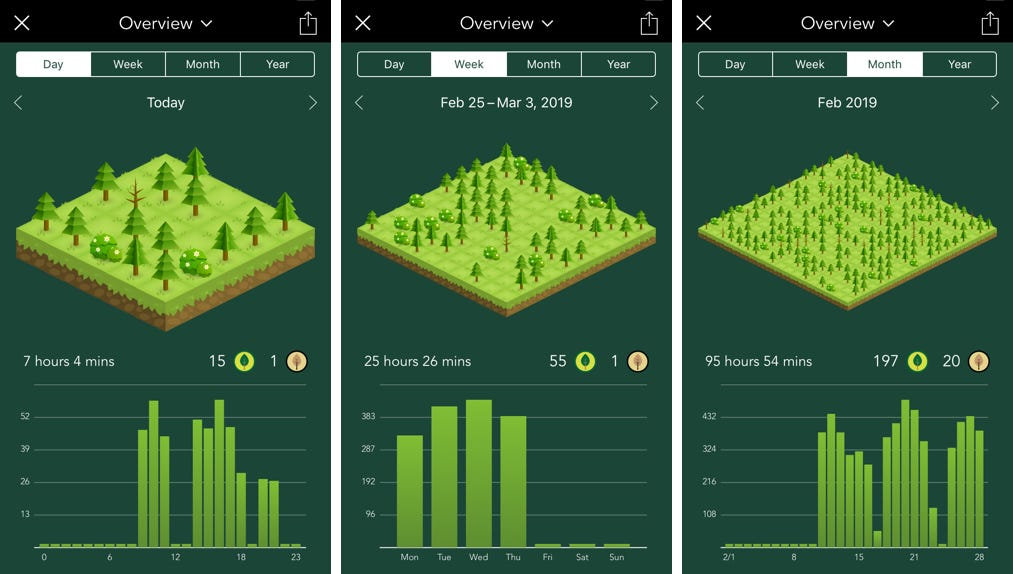So, we all know that procrastination is a big issue for a lot of high school and college students. It usually means rushing to cram everything in at the last minute, feeling super stressed out, and not doing as well academically as we could. But, if we start using some good strategies to beat procrastination, we can get more done and do better in our studies. This article is all about some useful tips to help students stop procrastinating and start making real progress, like managing time well, setting up a good study area, and using apps to stay on track.
Understanding Procrastination
Procrastination is when you keep putting off stuff, which usually leads to doing things in a hurry and not so great. Lots of students do this because they're not feeling motivated, scared of failing, or just swamped with work. Procrastinating doesn't just mess with your school stuff, it can also mess with your head, making you more stressed and anxious. Figuring out why you're procrastinating is the key to stopping it.
 Once you know what's holding you back, you can work on managing your time better, boosting your motivation, and reducing the negative impact on your schoolwork and personal life. Tackling procrastination head-on can help you get more done, feel less stressed, and achieve more in all areas of your life.
Once you know what's holding you back, you can work on managing your time better, boosting your motivation, and reducing the negative impact on your schoolwork and personal life. Tackling procrastination head-on can help you get more done, feel less stressed, and achieve more in all areas of your life.
Time Management Techniques
If you want to stop procrastinating, you need to get good at managing your time like a boss.
Whether you're working on personal stuff or killing it in your career, nailing time management is key. Just jotting down tasks or setting reminders won't cut it. You need to know what's most important, estimate how long things will take, and stick to your schedule like a pro. Trying out cool methods like the Pomodoro Technique, where you work hard for a bit then take quick breaks, can seriously boost your focus and productivity. The Eisenhower Matrix is another gem, helping you sort tasks by what's urgent and what really matters so you can focus on the stuff that counts. Time blocking is also a winner, giving you set time slots for different tasks and making sure you're laser-focused on what needs to get done. Oh, and don't forget to ditch distractions and create a workspace that's all about getting stuff done. By using these time management tricks and building good habits, you'll totally own your time and crush your daily goals.
The Pomodoro Technique
The Pomodoro Technique has gained widespread popularity as a highly effective time management method that aims to enhance productivity and focus. By breaking down work into manageable intervals, typically lasting around 25 minutes, you can maintain a high level of concentration and engagement. These focused bursts of activity are then followed by short breaks, usually around 5 minutes. This helps you stay on track and avoid burnout.
 One of the key principles behind the Pomodoro Technique is the concept of working with time, rather than against it. You set a timer for each work interval, which helps you dive deep into your tasks without getting distracted. Plus, knowing a break is coming up keeps you motivated and committed to getting things done efficiently.
One of the key principles behind the Pomodoro Technique is the concept of working with time, rather than against it. You set a timer for each work interval, which helps you dive deep into your tasks without getting distracted. Plus, knowing a break is coming up keeps you motivated and committed to getting things done efficiently.
And it's not just about time management - the Pomodoro Technique also encourages self-care. Those short breaks give you a chance to relax, stretch, or do some quick mindfulness exercises. This can reduce stress, clear your mind, and make your work more enjoyable.
Overall, the Pomodoro Technique is a great tool for boosting productivity and finding a balance between work and life. By using focused work intervals and taking strategic breaks, you can reach your goals more easily and make the most of your time. Ready to give it a try? Here's how to get started:
-
Choose a Task: Select a specific task to work on.
-
Set a Timer: Set a timer for 25 minutes and work on the task without interruptions.
-
Take a Break: After 25 minutes, take a 5-minute break.
-
Repeat: Repeat the cycle four times, then take a longer break (15-30 minutes).
Creating To-Do Lists
To-do lists are simple yet powerful tools for managing tasks. They provide a clear outline of what needs to be done, helping students prioritize their work.
 Tips for creating effective to-do lists include:
Tips for creating effective to-do lists include:
-
Be Specific: Breaking down larger tasks into smaller, manageable steps can make daunting projects seem less overwhelming. This approach not only enhances productivity but also instills a sense of accomplishment with each completed step.
-
Prioritize: Rank tasks based on their urgency and importance. By categorizing tasks based on their urgency and importance, students can ensure that they are focusing their time and energy on activities that truly matter. This strategic approach allows for a more efficient allocation of resources and a heightened sense of control over one's workload.
-
Set Deadlines: Assign deadlines to each task to stay on track to instill a sense of accountability and urgency. Deadlines help students stay on track, avoid procrastination, and foster a sense of discipline in their work habits.
To-do lists are not merely a collection of tasks but rather a dynamic tool that empowers students to take charge of their academic responsibilities. By embracing specificity, prioritization, and deadlines, students can harness the full potential of to-do lists and embark on a journey towards enhanced productivity and success.
Setting SMART Goals
SMART goals are a fundamental framework for setting objectives that are Specific, Measurable, Achievable, Relevant, and Time-bound. This methodology provides a clear and structured approach to goal setting that is particularly beneficial for students.
 When students set Specific goals, they know exactly what they want to achieve. By making goals Measurable, they can track their progress and see if they're heading in the right direction. It's also important for goals to be Achievable, so students can set realistic targets and work towards them effectively. And don't forget about Relevance - goals should be meaningful and in line with students' aspirations and priorities.
When students set Specific goals, they know exactly what they want to achieve. By making goals Measurable, they can track their progress and see if they're heading in the right direction. It's also important for goals to be Achievable, so students can set realistic targets and work towards them effectively. And don't forget about Relevance - goals should be meaningful and in line with students' aspirations and priorities.
Setting Time-bound goals creates a sense of urgency and accountability, motivating students to take action within a defined timeframe. For instance, instead of a generic goal like "study more," a SMART goal such as "study biology for 30 minutes every day this week" provides a clear roadmap for students to follow, enhancing their focus, productivity, and ultimately, their success.
Creating a Dedicated Study Space
Having a designated study spot is important for boosting your focus and getting stuff done. When you have a neat and quiet area to work in, your brain knows it's go time. Check out these tips for creating the perfect study space:

-
Choose the Right Location: First things first, where you set up shop is crucial. Find a quiet, well-lit spot with zero distractions. This way, you can focus like a pro and soak up all that knowledge.
-
Organize Supplies: Next up, keep your supplies in order. Make sure you have all your study essentials nearby - books, notebooks, pens - to save time and avoid any study session hiccups. Avoiding distractions is key.
-
Minimize Distractions: Ditch the phones, TVs, and loud tunes to stay laser-focused. A peaceful environment will level up your study game.
-
Personalize Your Space: Make your study area your own by adding personal touches like quotes, photos, or plants. Creating a cozy and inspiring space will boost your mood and keep you motivated.
So, with these tips and a space tailored to your style, you'll be all set for some serious learning and academic success.
Utilizing Productivity Apps
Productivity apps have changed the game when it comes to managing our time and getting things done. They're like super helpful tools that offer a bunch of cool features to help us work smarter, not harder. Whether you need to make to-do lists, set reminders, or collaborate on projects, these apps have got you covered.
When you use productivity apps, you can easily prioritize tasks, keep track of deadlines, and monitor your progress. They come with all sorts of fancy features like syncing with your calendar, setting goals, and analyzing your performance, so you can boost your productivity and reach your goals faster. Plus, being able to access them on different devices means you'll always be up to date, no matter where you are.
Check out these awesome apps that are perfect for students:
Trello
 Trello is a visual task management tool that helps you keep track of all your tasks. You can create boards for different subjects or projects, which makes it super easy to see what you need to do and when it's due.
Trello is a visual task management tool that helps you keep track of all your tasks. You can create boards for different subjects or projects, which makes it super easy to see what you need to do and when it's due.
With Trello, students can flexibly organize their academic stuff. You can have a board for each subject or project, so you can sort your tasks and see how you're doing. The lists on each board help you break down tasks into smaller bits, making it easier to study and finish projects. Plus, the cards in Trello let you add details like descriptions, due dates, and attachments, which is great for working together and getting things done efficiently. Overall, Trello is a handy tool for students who want to up their task management game and stay on top of their schoolwork.
Forest

Forest is a unique app that helps students stay focused by growing virtual trees. If the user leaves the app to check their phone, the tree dies. This gamified approach encourages students to stay on task.
The Forest app is awesome because it keeps you focused with a cool feature - if you get distracted and leave, your virtual tree dies. It's a fun way to remind you to stay on task and be responsible. Plus, it helps you develop mindfulness and concentration skills.
You can grow a digital forest by concentrating for longer periods, which lets you see how far you've come and motivates you to keep going. This progress tracker is a great way to stay motivated and reach your academic goals.
In a world full of distractions, Forest is like a focus superhero. It shows how technology can be both fun and helpful for learning and motivation. By mixing games with productivity, Forest has changed how students study, making focus a rewarding journey to success.
Todoist
 Todoist is like the ultimate task buddy that everyone's raving about because it's super easy to use and packed with awesome features. You can create tasks, organize them into different projects, set deadlines, and make sure you're tackling the most important stuff first. It's a lifesaver for students who need to keep track of all their school work.
Todoist is like the ultimate task buddy that everyone's raving about because it's super easy to use and packed with awesome features. You can create tasks, organize them into different projects, set deadlines, and make sure you're tackling the most important stuff first. It's a lifesaver for students who need to keep track of all their school work.
The best thing about Todoist is how simple it is to use. The design is clean and straightforward, so you can add tasks and manage your schedule without any stress. Plus, there are cool features like recurring tasks, subtasks, labels, and priority levels to help you get things done efficiently. These tools are perfect for breaking down big assignments into smaller steps, tracking your progress, and focusing on what really matters.
And the best part? You can access Todoist from any device - your computer, smartphone, or tablet. It syncs seamlessly across all platforms, so you can stay organized and productive wherever you are.
So, if you're a student looking to ace your time management game, Todoist is your go-to tool. It's user-friendly, packed with useful features, and works on all your devices, making it the perfect companion for staying on top of your school workload.
Not only do these apps help students work better on their own, but they also make teamwork and collaboration a breeze in companies. They make it easy for teams to communicate, share files, and assign tasks, so everyone can work together smoothly no matter where they are. Plus, these apps give managers valuable info based on data, so they can make smart choices, manage resources well, and keep an eye on how the team is doing.
To sum it up, productivity apps are must-have tools for today's scholars who want to manage their time better and be more efficient. With these cool apps, you can unleash your full potential, get more done, and aim for success in whatever you do, both in academics, at work, and in your personal life.
Additional Tips for Boosting Productivity
Remember to Take Breaks!
When it comes to being productive and feeling good, taking breaks is super important. Breaks aren't just about staying focused and avoiding burnout; they help boost your creativity and problem-solving skills. We recently touched on the Pomodoro Technique which is a cool way to manage your time by working in short, focused bursts with quick breaks in between. This method really works in keeping you productive and preventing mental fatigue.
But hey, it's not all about the Pomodoro Technique. Whether you're a student or a pro, it's essential to schedule in some longer breaks too. These longer breaks give you a chance to step back, clear your mind, and recharge both physically and mentally.
Taking a walk, practicing mindfulness, or even just a power nap can make a huge difference in boosting your energy levels and overall well-being.
Plus, taking regular breaks not only helps you stay productive but also improves your decision-making and brainpower. When you give your brain a breather, you come back to your tasks with a fresh outlook and renewed motivation. So, remember to fit those breaks into your daily routine – they're not just a nice-to-have, they're a must for your long-term success and happiness.
Get Moving!
It's important to stay active to keep yourself feeling good and living a healthy life. Moving your body regularly has tons of awesome benefits that can make a real difference in how you feel every day. Not only does exercise give you a boost of energy, but it also does wonders for your mood and brainpower.
For students, getting some exercise into your daily routine is a game-changer. Whether you prefer a quick walk in the morning, a chill yoga session in the afternoon, or a full-on workout in the evening, staying active can seriously improve your physical and mental well-being. Exercise helps you de-stress, focus better, and even get those creative juices flowing.
Plus, keeping up with regular physical activity can have some awesome long-term effects on your school performance. By making exercise a part of your routine, you might find that your memory gets better, your problem-solving skills improve, and you become more productive overall. And hey, staying active can also help prevent health issues like obesity, heart disease, and diabetes.
It's key for students to find physical activities that they enjoy and can easily fit into their day-to-day lives. Whether it's playing a sport, biking around, or busting out some dance moves, the important thing is to make exercise fun and something you can stick with. By prioritizing physical activity, you'll be on your way to a healthier and happier lifestyle in no time!
Gettin' Mindful with It!
So, mindfulness is a highly effective practice where you're totally in the moment, no judging allowed. It helps you become more aware of your thoughts, feelings, and what's going on around you. One way to do this is through meditation, where you focus on your breath or something specific to chill out and relax your mind.
Another effective way to practice mindfulness is by doing deep breathing exercises. It's great for calming your nerves, reducing anxiety, and getting more oxygen to your brain, which can boost your focus and clear your mind.
When students make mindfulness part of their daily routine, they can get a ton of benefits. It's not just about lowering stress and improving concentration, but also about managing emotions better, building resilience, and feeling happier overall.
Teachers can help students get into mindfulness in different ways, like leading guided meditation sessions, doing mindfulness activities in class, or giving them resources to practice on their own. By bringing mindfulness into schools, educators can help students learn important life skills that'll make a positive difference in their grades and their lives.
Final Thoughts
So, if you wanna ace your academic game, kicking procrastination to the curb and upping your productivity levels is the way to go. Try out some time management hacks, set up a cool study spot, and check out some rad productivity apps.
Remember, it's all about finding what ticks for you, so don't be afraid to mix things up. With a bit of grit and the right mindset, you'll crush procrastination and reach your academic dreams. Keep that motivation high, stay laser-focused, and take that first step toward a productive future. You got this!
